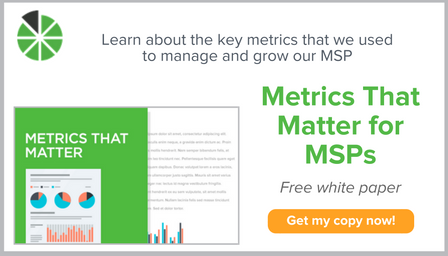How to Measure Motivation of Your Employees to Increase Performance

While it’s true that great managers are a constant source of encouragement and talented employees possess the ability to self-motivate, using other motivational techniques is never a bad idea.
But, let’s be honest. Two-dimensional efforts to motivate employees, like posters of kittens dangling from tree limbs broadcasting “Hang in there!” just doesn’t cut it in most cases. While some employees may feed off motivational phrases and signs, others might be motivated by team cheerleading sessions and others only by financial rewards, public recognition, or “winning,” whatever that may look like on your team or in your organization.
Regardless of these motivational methods, one method stands out above all and that’s feedback...consistent, regular feedback. It’s even better if it’s delivered quickly rather than waiting for a quarterly or even yearly review. The ability to provide that kind of feedback, easily and efficiently, is what makes goal setting and dashboards so valuable in the race to motivate.
Quick Links
- Why is employee motivation important in the workplace?
- What motivates employees?
- 10 employee motivation stats you need to know
- How to use dashboards and goals to help motivate employees and increase their performance
Why is employee motivation important in the workplace?
Ask anyone who’s set a goal what helped them achieve it and they’ll likely tell you they really wanted it. It’s that “want” that drives us. It’s motivation. So when we look at employee motivation in the workplace, we must understand that it is also the drive that helps us achieve the goals we’ve set for our teams or our business. It’s also the commitment, time, energy, and effort employees are willing to put into achieving those goals.
It’s easy then to see how motivation can make all the difference in the success of our businesses. In fact, highly motivated employees are far more likely to be highly productive and highly engaged in their work. The benefits of that are pretty contagious as well, not just with other staff, but with customers and clients as well.
What motivates employees?
As noted above, though a bit jokingly, what motivates employees really depends on the employee. While it would be amazing to always have teams of self-motivated employees, that’s just not realistic. So, the best thing team leaders can do is, first, lead. Effective leaders have a significant impact on motivation.
However, leaders have several other tools at their disposal to determine what motivates their employees. The first tool seems obvious…ask. Most people can tell you what motivates them, but we rarely ask. We often ask, in interviews and yearly reviews, what an employee’s goals are, but we rarely ask what we can do to help with the motivation to get there. Assuming their goals are aligned with business goals or team goals, we should be asking.
The other tool at your disposal is observation. Simply by observing your employees you can gain a strong sense of what energizes them. What tasks are they excited to tackle? Are they team players or solitary stars? Gauging how they respond to different tasks, different objectives, and different rewards will help reveal what motivates them and enable you to use that tool more often.
That said, there are a few known methods to motivating employees:
- Competition
- Incentive programs
- Group or individual rewards (like time off, meals, parties, events)
- Consistent and regular positive feedback
- Encouraging creativity, fun, and individuality
- And many more ideas out there!
10 employee motivation stats you need to know
So before we jump into a few great stats that illustrate the importance of motivation and its impact on your organization, let’s review a few points so that when we look at the stats, we understand how they’re connected:
- Motivated employees are engaged employees.
- Engaged employees are happy employees.
- Motivated and engaged employees are productive employees.
- Just 13% of employees report feeling engaged at work.
- Disengaged employees cost organizations between $450-550 billion annually.
- Teams with highly engaged employees have a 41% reduction in absenteeism and 17% increase in productivity.
- Connected (engaged) employees are 87% less likely to leave a company.
- 85% of organizations have a rewards program in place with 70% offering up to 6 options.
- Organizations with engaged employees have 233% greater customer loyalty and see a 26% increase in revenue than organizations whose employees are not engaged.
- According to Gallup’s State of the Global Workforce Study, 43% of highly engaged workers receive feedback weekly.
- Managers are crucial to employee engagement and satisfaction. 39% of employees mention their direct supervisor as a reason for leaving while Gallup’s study found that managers are responsible for up to 70% of an employee’s job satisfaction.
- 39% of employees feel under-appreciated while another 77% report, if they felt recognized, they would work harder.
- Employee engagement increases by 60% when recognized by managers.
How to use dashboards to help motivate employees and increase their performance
So, given that feedback, recognition, and rewards are an excellent way to help motivate employees, how can you, as a manager, facilitate that? First, you need to set goals. Once the goals are set, and the team has alignment on what they are and understands their tasks, milestones, and benchmarks along the way, one of the best tools you can utilize to not only track progress and performance, but to also provide ongoing feedback, is a business intelligence dashboard.
Track Progress with Goals
BrightGauge Goals are really easy to set up and monitor over time. They allow you to assign a specific and measurable goal to an individual employee, with a due date, and automatically send weekly check-in reminders to the individual. Not only does this allow you to assess whether an employee is on-track to be rewarded, but it encourages accountability with team members, while provided that very essentially regular feedback which are both so important.
Dashboards are a Simple Way to Track KPIs
The kinds of metrics required for motivation are generally the kinds of data that document the success of the company as well. Performance data should be tracked across time to establish visible baselines for the company’s growth and progress, which ties back to KPIs and how they’re measured.
BrightGauge makes it easy to track KPIs and other important company, team, or individual metrics by automatically collecting data from your unique data sources and displaying it on easy-to-access dashboards. Work performance metrics like response times and latencies can be automatically measured, inbound calls can be counted, and sales numbers can be accumulated in the course of daily activities. Further, you can automate your reporting and share these dashboards with your team to keep them focused and motivated.
If properly identified and effectively measured, KPI indicators can form the basis for performance reports that enable the kind of regular feedback to be delivered readily and efficiently. Graphics also display critical statistics so performance becomes highly visible and measurable.
If you'd like to talk more about how BrightGauge tools can help you motivate employees and track their progress on key goals and initiatives, get in touch with us today!
Free MSA Template
Whether you’re planning your first managed services agreement, or you’re ready to overhaul your existing version, we've got you covered!



